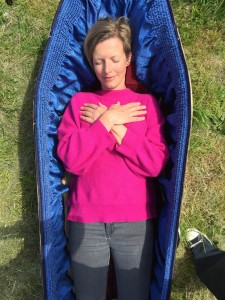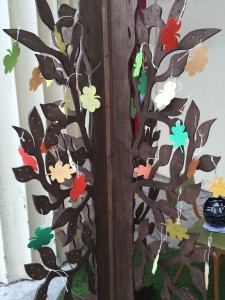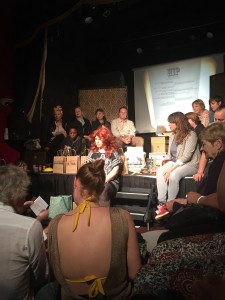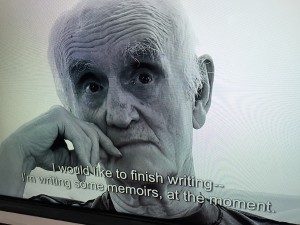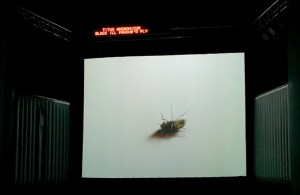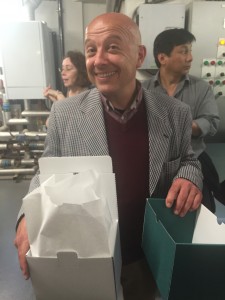A Guest Blog for 2016 by Zelah Senior at Brighton Fringe.
Watch this space for a new blog for 2017
About Zelah
Zelah has many years’ experience in the arts, not only in the UK, but also in South Africa, Sri Lanka and the Balkans. She initially studied English literature, has spent much of her subsequent career working in international development, and is also performer and arts maker. Zelah currently works with people and organisations in transition, as they move from one ‘story’ of themselves to another. www.zelahsenior.com.
Listen to our interview with Zelah Senior about Death and Dying
May 6th 2016
More to come
May 8th 2016
So, briefly, as it’s lunchtime, and my kids need nourishing before I head off into the Fringe: why am I spending May 2016 hunting down all the Brighton Fringe and Festival performances I can find on death and dying?
Well, over the last few months, I have gradually found myself totally and utterly fascinated by death and dying and by what it means to live knowing that there’s only one sure thing in life – we’ll all die. How do we deal with that?
And, suddenly, there seems to be more death about than usual. Or rather it’s hitting our consciousness more than usual. The first months of 2016 have seen the demise of many of the icons of the generation before mine, and it’s having a big impact. On the one hand, that’s strange, because we live with death and dying on our screens and in our lives everyday. The fact that people die is not exactly surprising. But somehow, these particular deaths are stirring something up; there’s a feeling that something more significant is going on.
I chatted about this to Lucy, in the Festival Box Office yesterday. She asked me what I thought it all meant: a great question. For me it’s a massive wake up call – a call to show up, get out there and do my thing. To live fully in my own particular way. As for Lucy, she wasn’t yet sure exactly what it means to her. But it means something; it definitely means something.
So here I am, living fully in my own particular way, and seeking out all the wisdom on death and dying that Brighton has to offer this May.
I had my first Fringe lesson in death yesterday evening at 10.30, when I tried to get a return for sold-out show Séance at the Sweet Dukebox last night, but with no luck. Lesson no. 1: death doesn’t always show up when you want it too.
May 10th 2016
On Sunday afternoon, at the Warren, I met up with Tora Colwill, Belinda Chapman, and Peter Murphy, who are involved in the Brighton Death Festival’s upcoming Tiptoe through the Tombstones and Crème de la Crem event on 14 May 2016.
The Brighton Death Festival is organised by Tora Colwill (from The Modern Funeral) and Cara Mair (from ARKA Original Funerals), both based in Brighton. Their intention is to get people thinking and talking about death, and to let us know about things we don’t tend to think too much about, like end of life planning, and the alternatives to a men-in-top-hat-and-tails type of funeral.
Next Saturday, I’ll be joining The Brighton Death Festival at the Level at 12 noon for a public funeral procession to Woodvale Crematorium and a visit behind the scenes at Woodvale. I’m also looking forward to reviewing Belinda Chapman and Peter Murphy (performers and celebrants at Light on Life) as they stage Crème de la Crem, an original piece featuring the deaths of two people and their funeral arrangements, written and directed by Belinda. Exciting stuff.
Listen to what Peter, Belinda and Tora have to say about the event in the following audio interview. Stay with us right to the end to hear Belinda’s coup de grace, which brought our conversation to a timely finish.
On Sunday evening, I had the good fortune to see Mummy or the Art of Saying Goodbye,a fresh, new one-woman show about grief, death and the art of letting go, written and performed by Amy Gwilliam at the Sweet Dukebox. In nutshell, it was a brilliantly conceived, directed and performed piece of tragi-comic, food-for-thought theatre. If you get the chance to see it or to ask Amy to perform it for you, jump at it.
You can read my full review here http://fringereview.co.uk/review/brighton-fringe/2016/mummy-or-the-art-of-saying-goodbye/ and listen to my post-performance interview with Amy below.
May 13th 2016
So what’s been going on since Sunday?
A lot.
I’ve been whirling through a whole load of Fringe and Festival shows, and death seems to be popping up everywhere else as well.
On Tuesday, I reviewed the magnificent depiction by The Ricochet Project of Western-style, disconnected life as far worse than death in Smoke and Mirrors:“An exquisitely conceived, ultra contemporary blend of circus and dance… a wake up call, an intensely radical act.”
You can read my full review here.
Wednesday was all about honouring, remembrance and our continuing connection with the dead:
In the afternoon, I dropped into Good Grief – Living with Loss in the Unitarian Church, an event coordinated by Martletts, and bringing together organisations who work with them at the hospice, such as Cruse Brereavement Care, Winston’s Wish, AgeUK, Survivors of Bereavement by Suicide and The Samaritans (apologies if I have forgotten anyone). The event was all about providing information about bereavement, death and dying and the help and support available to us. All of us. 100% of us will die, and 100% of us will grieve. This is a photo of the memory tree outside the church:
You can hear my interview with Jackie Windsor, Learning and Development Manager at The Martletts Hospice, the event’s organiser, here:
On Wednesday evening, I saw Hip, “…a must see show. A Brighton-spirited séance with tequila, nibbles, tenderness and laughter” – which approached death as a lack of physical existence only. We live on in what we leave behind – our things, our diaries, people’s memories – still growing, existing and shaping those around us. And even, as shown in this production, forming new connections with people we have did not meet when we were alive.
You can read my full review here.
I also watched a beautiful film about ageing in the Brighton Dome foyer. Him, by Sheila Hill features 80 year old actor, Tim Barlow, reflecting on his life, what it’s like to age, and what he wants to leave behind. Tender, funny and real – check it out, if you’re around the Dome.
Thursday was all about death as black comedy, an “Always look on the bright side of death” – you can’t do anything about it, so you may as well have a laugh – kind of evening:
First, I saw Derek Ryan’s new one-man comedy show Slaughterhouse Rules, and learnt all sorts of random facts about death, with a very Irish flavour. Did you know that death is only our No. 2 fear? The first is public speaking! Or that some tombstones have reverse inscriptions on the back? The kind that says “This man was a real shit”? Do you have any idea what happens in a slaughterhouse? Do you want to?
I went straight on to witness 75 deaths in a row, at The Complete Deaths. It was like watching Horrible Histories’ stupid deaths, meets Monty Python, meets the RSC, meets Cocoa the Clown, meets Pride. A fabulous, ridiculous and deeply thoughtful depiction of Shakespeare’s deaths, your death, my death and all our deaths, ending in the best death of all: the black, ill-favoured fly in Titus Andronicus.
So, yes, it’s been a full and varied week. And I’m really looking forward to tiptoeing through the tombstones with the Brighton Death Festival tomorrow.
But for now, I’m looking forward to a night off death and dying: tonight, I’m going to see The Encounter, just for me. That said, if the rest of the week is anything to go by, I have a sneaky feeling death will show up somewhere in this evening’s performance.
May 15th 2016
Oh, and death did show up on Friday’s night. Of course it did. The Encounter was framed by death, soaked through with it, as are all our lives. The prospect of imminent and inevitable death by one thing or another provided the dramatic tension for this original exquisitely crafted piece, which, amongst other things, asks us to question our linear approach to time. What if there is no beginning and no end, but time is cyclical: beginnings are endings and endings are beginnings? What are living and dying when seen from that perspective? I wasn’t down to review this production, but if you’re in any of the cities it will visit on its current tour, beg, borrow or steal tickets to see it.
Yesterday – Saturday – was all about ‘should haves’ and ‘if onlys’. My friend, Rhiannon, made the journey from Oxford to go to the Brighton Death Festival’s Tiptoe through the Tombstones event at Woodvale Crematorium, organised by ARKA Funerals and The Modern Funeral. We were late and totally disorganised from the moment I collected her at the station.
Funnily enough, disorganisation was also one of the main themes of in the productions of Crème de la Crem and Outside the Box: A Live Show about Death, which we saw that day. Both productions showed us that there’s a lot we can do to avoid the ‘should haves’ and ‘if onlys’ at the end of our lives, and help our loved ones give us the kind of send off we want. For example: as well as making a will and powers of attorney, you can be clear on the kind of medical and other types of treatment you do and don’t want, where and how you’d like your death to take place, what you’d like to happen to your body after death, what kind of funeral you’d like, and how you’d like your body to be disposed of. The lesson was clear – you have a huge amount of agency and choice – don’t let your death be a missed opportunity or an administrative nightmare for those you leave behind.
You can read my review of Crème de la Crèm here and my review of Outside the Box here.
Also, here’s the interview I did with Liz Rothschild about Outside the Box:
Crème de la Crem was a one-show only in the Fringe, but Outside the Box runs at the Village until Tuesday 17th May – go and see it if you’re curious about death!
Going back to the Brighton Death Festival’s Tiptoe through the Tombstones – what a fun and educational event! A real celebration of life and death.
Even though we missed the Funeral Procession from the Level to Woodvale, we bumped into some very effervescent Copperdollar girls, as they made their way back after the procession:
So, I interviewed Kt Simpson and found out more about their work, inspired by the Samhian and Mexican Day of the Dead, celebrating life and the afterlife (you can hear the girls having huge amounts of fun in the background):
I also got to lie in a traditional coffin (scroll up to see my new blog photo) and interview Tommy Lawford, undertaker with The Modern Funeral in the working week, clown at the weekend, and creator of the Good Grief Funeral Party, where you can celebrate your death (or the death of something else in your life) while you’re still alive. Here’s our interview:
It was eye opening to see different types of coffins – woven, cardboard, painted – and an unconventional hearse that doubled up as a mini bar. For me, one of the highlights of the afternoon was a behind-the-scenes tour of the crematorium. We walked through the process from the chapel, to the incinerators, to the collection of remains. I found it fascinating, respectful and immensely reassuring, as apparently did the rest of the group. Here’s a picture of Tommy Lawford of The Modern Funeral showing us the box in which people are given cremated remains:
All in all, Rhiannon and I were so inspired by our day that we’ve made a date to help each other revise our end of life wishes. That’s what friends are for.
23rd May 2016
My journey into all things death and dying at the Fringe and Festival continued apace last week. To quote Eddie Izzard, my life looks a bit like this: “Get up in the morning, death, death, death, death, death, death, death – lunch- death, death, death -afternoon tea – death, death, death – quick shower…”
Last Tuesday 17th May, I was blown to bits and left bleeding on the forecourt by the Festival’s This is how we die, written and performed by Christopher Brett Bailey. This was as far from a polite tea and cake discussion about death as you could get. I was so bowled over that I could only manage to ask him one question in our post-performance interview. He was pretty shaken too, which was not surprising after such an intense, razor sharp performance. Chris’s skill with words is so acute it was almost painful to listen to them, as he stripped away our fixation on death and demanded whether we’re just trying to get off the hook for living. I went home with these words ringing in my head (apologies to Chris if I slightly misquote them):
“Maybe there’s miles and miles of open road ahead
Maybe you and me have got to stop digging our nails into the armrest”
Read Alice Booth’s review of the performance here, and listen to my mini, performance-drugged interview with Christopher Brett Bailey here:
Following that, I saw three Fringe performances at Sweet Venues: Sex, Strokes, Death, Denial (click here for Simon Jenner’s review), Save me a Balloon (click here for my review and interview) and the Big Stiffy (click here for my review and interview).
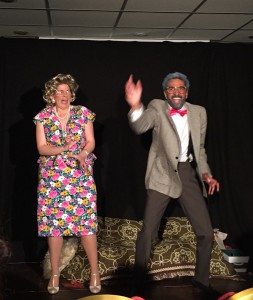
Sex, Strokes, Death, Denial’s take on death was as an opportunity for truth telling, reconciliation and new beginnings. Save me a Balloon’s angle was a charming and poignant tale of undying love and loyalty, and how to keep on living after a terminal diagnosis. And The Big Stiffy was an absurdly funny take on a funeral eulogy.

As so many of the deathly performances that I have been watching this year have been at one Sweet venue or another, I caught up with JD Henshaw, Artistic Director at Sweet Venues, last Thursday. I chatted to him about how that came about, how he goes about the business of curation, and the show I missed right at the beginning of the Fringe, Seance:
Yesterday, there was a whole afternoon and evening of death-themed events at the Festival: a Death Market in the Brighton Dome Café Bar, followed by Let’s Talk About Death, a joint event with the Brighton and Sussex Medical School, and concluded by Elgar’s Dream of Gerontius. Unfortunately, the demands of living meant that I didn’t get to listen to the Dream of Gerontius, but I did make the first two events.
The Death Market was the third information event that I’d been to in as many weeks (the first two being Good Grief, and Tiptoe through the Tombstones). It’s been great to see so many people at each of the events, asking questions, and gathering information; the more people who are aware of the support available around death, dying and grief, the better.
The underlying message behind this event was “start talking about and planning your death now”, and information was provided (over french macaroons) by Griffin Smith solicitors, Chestnut Tree House (children’s hospice), ARKA Funerals, The Modern Funeral, Masters and Son (funerals), Jo Sweeting (Sculptor and Lettercarver), Death Café, and Brighton and Hove Council (let me know if I missed anyone). Although, on the one hand, it felt like a slim group – there are many other organisations working on death and dying in and around Brighton and Hove– on the other hand it was perfect. There was just enough information to pique the interest of the audience that was arriving for the Let’s Talk About Death debate, without it being overwhelming.
I do, however, wonder whether the practice of serving up conversations about death with cake is peculiar to the British, and also whether it’s wise. I know that tea and cake play a calming, everything’s all right role in British culture. And I love a piece of cake, I really do; I’m one of those rare creatures in Brighton who still eats everything. But sugar intake has been scientifically linked to fuzzy thinking and emotional switch off. Surely it might actually detract from the point of these events: to help people talk about death and dying in a clearer and more direct way, and then go home prepared to take some action?
Anyway, death and cake musings over, it was soon time for the Let’s Talk About Death debate. This was the third collaboration between the Brighton and Sussex Medical School and the Brighton Festival – previous debates focused on dementia and facing cancer – and it was the first time that the event had been sold out. The event was chaired by Professor Bobbie Farsides (Professor of Clinical and Biomedical Ethics, Brighton and Sussex Medical School), with Dr Andreas Hirsche (Macmillan Consultant in Palliative Medicine), Dame Barbara Monroe (former Chief Executive, St Christopher’s Hospice), Dr Andrew Thoms (Consultant and Medical Director, Pilgrims Hospice), Dr Paul Davies (Reader in Philosophy, University of Sussex), and Tim Crouch (playwright, actor, director).
Here’s my interview with Professor Bobbie Farsides, just after the event:
One of the aims of the event was to draw a link between the theme of death and dying that has run through the Festival’s performance programming this year and a more practitioner viewpoint. For me, that wasn’t fully explored. Although Tim Crouch ran us through a Shakespearean perspective on death, and two of the other panellists talked briefly about their collaboration with artistic projects around death, much more attention was focused on end of life care and medical treatment.
And that is what the debate did very well: acting as a vibrant starting point for conversation on ‘the D word’, by opening up issues such as:
- Giving up the notion of a ‘good death’ and a ‘bad death’, and just letting it be what it is.
- Recognising the importance of end of life planning and being clear about your wishes (and then being as prepared to let it go if life doesn’t work out that way).
- Linked to that, reframing our thinking around end of life care as a co-creative exercise, involving patient, family, carers and the medical profession.
- Valuing how important the skill of listening is for everyone involved in end of life care.
- Recognising the role of authenticity at the end of life – it’s OK not to have the answers.
- Empowering medical professionals to proactively start conversation around death, rather than waiting for patients to start them.
- Tackling what Sheldon Solomon calls ‘death anxiety’, our fear of dying that is so closely linked to loss of meaning, and loss of control – so that we free ourselves up to think about ‘the unthinkable’ in a different way.
From what I’ve seen so far in Brighton this month, it’s in the area of death anxiety that the Arts play the biggest role. Seeing a play about death or watching a stand up comic talk about death allows us to temporarily suspend our fear of looking at death too hard, and to approach it from a different angle. Much of the time, it represents an easier way into an area around which we feel profound discomfort. However, sometimes, it can also be a huge punch to the gut, like This is How We Die. But even then, you can still get up, go home, and cram yourself with cake (or something stronger) to satiate that anxiety.
And, with all that food for thought, that takes me to the end of another full week of death in Brighton.
30th May 2016
This is the last in my series of blog posts on death and dying at the 2016 Brighton Festival and Fringe.
Last week I saw 1 in 3 at the Sweet Waterfront, and two productions at the Festival which weren’t on my death and dying list – Zvizdal and Until the Lions – but which were both dripping in it.
You can read my full reviews of 1 in 3 here, and of Until the Lions here, and you can read Alice Booth’s review of Zvizdal here. In a nutshell, 1 in 3 was a brave, thoughtful and heartfelt new play set in a chemotherapy treatment room. It entered territory that few choose to explore unless they really have to: what it’s like to live with cancer. Zvizdal was a film performance, telling a tale of life, love, survival, ageing and death in the exclusion zone around Chernobyl. Although there was the constant hum of a Geiger counter in the background, this was less about death from radiation than what it’s like to age in isolation, with very little family and community support. Until the Lions was a dance performance portraying a mythic struggle between sexuality and celibacy and, ultimately, life and death.
So, that’s it for my Brighton Festival and Fringe 2016. But what have I learned?
At the beginning of this blog I started with the question, is there really any more death about than usual? The answer is no. But our awareness feels particularly high right now – the old guard are dying, we all know someone with cancer or another life threatening condition, and it feels like we’re suddenly hyper-alert to death, asking questions, seeking answers. In some ways, it reminds me of the late 80’s, when AIDS hit the news big time.
At the same time, there’s a shift underway in the professional services available at the end of life. A few years ago, all we were encouraged to think about before we died was writing a will. We died wherever we died, funerals were, well, funerals, and there was a community around us that just took care of things. Now, there’s a whole new industry developing around death, which opens up more choices than we ever knew we had, and brings with it the possibility of planning our deaths in more detail. Of course, we can’t expect that all of our deaths will go to plan – death, like birth, will unfold the way it unfolds. However, if you’ve thought about and shared what you would ideally like your end of life care and funeral to be like, those thoughts will give your family and friends a flavour of what you’d like, even if your death doesn’t follow the script you wrote for it. Plus, talking about this brings with it the opportunity to connect us to a community of people who are willing to support us through the ultimate life event. And that kind of real connection is exactly what so many of us crave in our increasingly individuated society.
Four of the events that I attended in the last month – Good Grief, the Brighton Death Festival’s Tiptoe through the Tombstones, the Death Market, and Let’s Talk about Death – focused on providing information and starting conversations around death and bereavement. Their purpose was to get us thinking and into action on our end of life planning, through highlighting its importance, showing developments in end of life and palliative care, illustrating the sheer breadth of choice around care and funerals and the vast range support services available to the bereaved. The key message of the Martlett’s Good Grief – Living with Loss event was explicitly about community, telling us the one thing we all want to hear: “You’re not alone”.
The rest of the events I attended were drama or movement performances, and I have spent much of the last three weeks wondering about the role of performance in death, dying and bereavement. This is where I have got to:
Societies like our own tend to keep death either hidden away or display it in highly stylised ways – for example mass killings in mainstream films and computer games, or on the news. Drama allows us to approach death in a different way – through the experience of the characters on stage. So, our experience of death through drama is much more personalised and intimate than we tend to get in other areas of our lives, unless we’re actually dealing head on with the death of ourselves, family or friends. It also gives us a sense of “not-aloneness” – here are other people grappling with the same anxieties and concerns as us. Some of the shows I saw were hard-hitting wake up calls (This is How We Die), some looked at it with humour or absurdity (The Big Stiffy), some with tenderness (Save me a Balloon), some were a mix between awareness raising and drama (Crème de la Crem), some were based on story telling (Hip) and some just used death as an implicit, ever-present frame to the action (The Encounter). But what they all gave us was a chance to step closer to death, process some of the anxiety we feel about it, and then step out into life again.
That’s it for now. It’s been an eye-opening month. Thanks for following me through it.



























